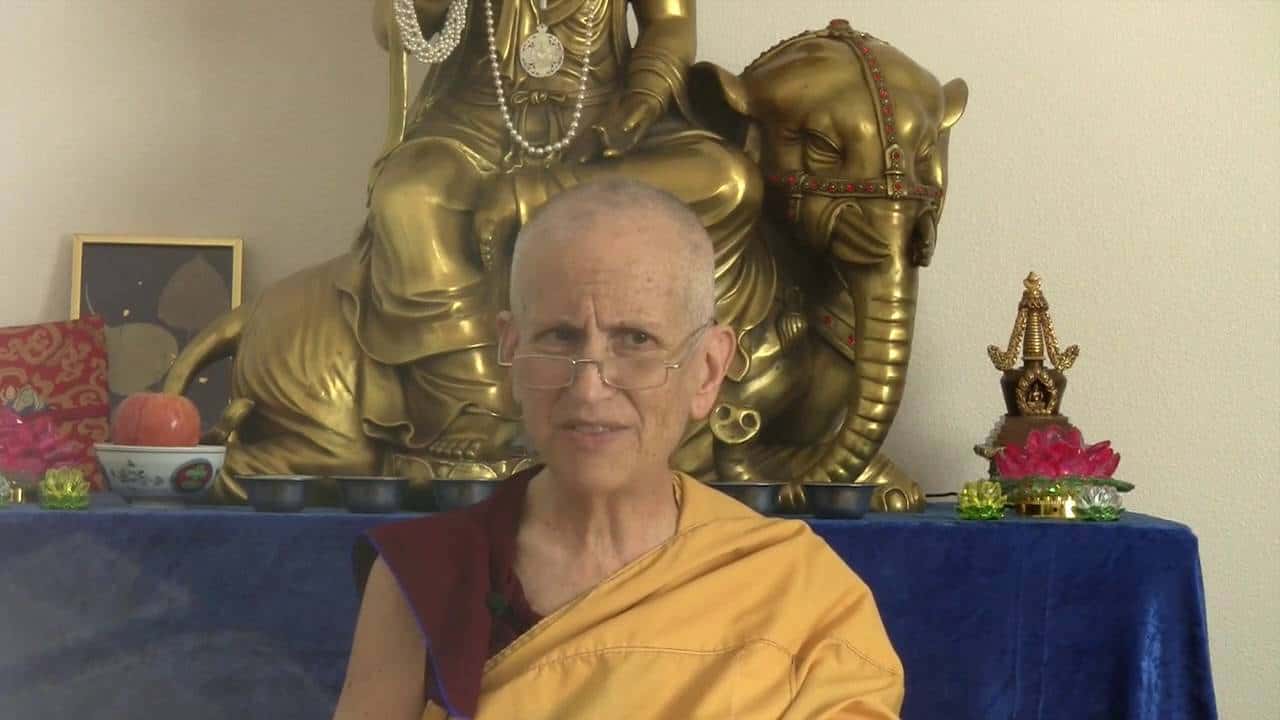Generating renunciation
The text turns to training the mind on the stages of the path shared with intermediate level practitioners. Part of a series of teachings on the Gomchen Lamrim by Gomchen Ngawang Drakpa. Visit Gomchen Lamrim Study Guide for a full list of contemplation points for the series.
- The measure of having produced the thought of renunciation
- Renunciation as compassion for yourself
- Eliminating false ideas about renunciation
- The kind of life you want to attain liberation
- The difference in practicing Dharma as a monastic and householder
Gomchen lamrim 54: Generating renunciation (download)
Contemplation points
- The first section of the Gomchen lamrim that we looked at this week is the measure of achieving the mind of renunciation. In his Three Principal Aspects of the Path, Lama Tsongkhapa says that the measure is that when we have “day and night unceasingly the mind aspiring for liberation” we have generated the determination to be free.
- Why is it that renunciation is so important on the path?
- Why do we have to have renunciation before we can develop bodhicitta?
- Image having this mind that is day and night unceasingly aspiring for liberation. What effect would that mind have on the way you interact with people, things, and situations in your life?
- How is having renunciation a form of having compassion for yourself?
- What can you do to cultivate renunciation based on the teachings we’ve received in the last couple months?
- We, as ordinary beings, take rebirth under the influence of ignorance, afflictions, and karma, but there are bodhisattvas who take rebirth under the influence of compassion and prayer. What does this mean? Imagine what it might be like to take a mental body instead of this gross physical form. What does having such a body enable these bodhisattvas to do?
- Having a precious human life is said to be the best opportunity for spiritual practice in cyclic existence. Living the life of a monastic provides even greater opportunity and support for spiritual practice.
- Why is this so?
- If you are a lay practitioner, what obstacles do you have in your life to practice that you might not have as a monastic?
- Consider that we can aspire to live a monastic life later in this life or in a future life, and admire those who already do, without feeling inferior or discouraged in our own practice.
- What is it about samsara that we find so exciting? We study the various forms of dukkha in cyclic existence and see them operate in our life and yet we are constantly striving for more of it. We hear stories about people feeling fine one day and fighting for their lives in the next, and yet we never think it will happen to us.
- What is holding you back from letting go/renouncing samsara and the pleasures of just this life?
- What can you do to cultivate the mind of renunciation?
- Consider: Samsara doesn’t run out on its own because we perpetuate it ourselves, in our own minds and through our own actions. Resolve to stop this cycle by continuing to study, reflect, and meditate, by continually bringing to mind the defects of samsara as a means to transform the mind that now clings to it.
Venerable Thubten Chodron
Venerable Chodron emphasizes the practical application of Buddha’s teachings in our daily lives and is especially skilled at explaining them in ways easily understood and practiced by Westerners. She is well known for her warm, humorous, and lucid teachings. She was ordained as a Buddhist nun in 1977 by Kyabje Ling Rinpoche in Dharamsala, India, and in 1986 she received bhikshuni (full) ordination in Taiwan. Read her full bio.


